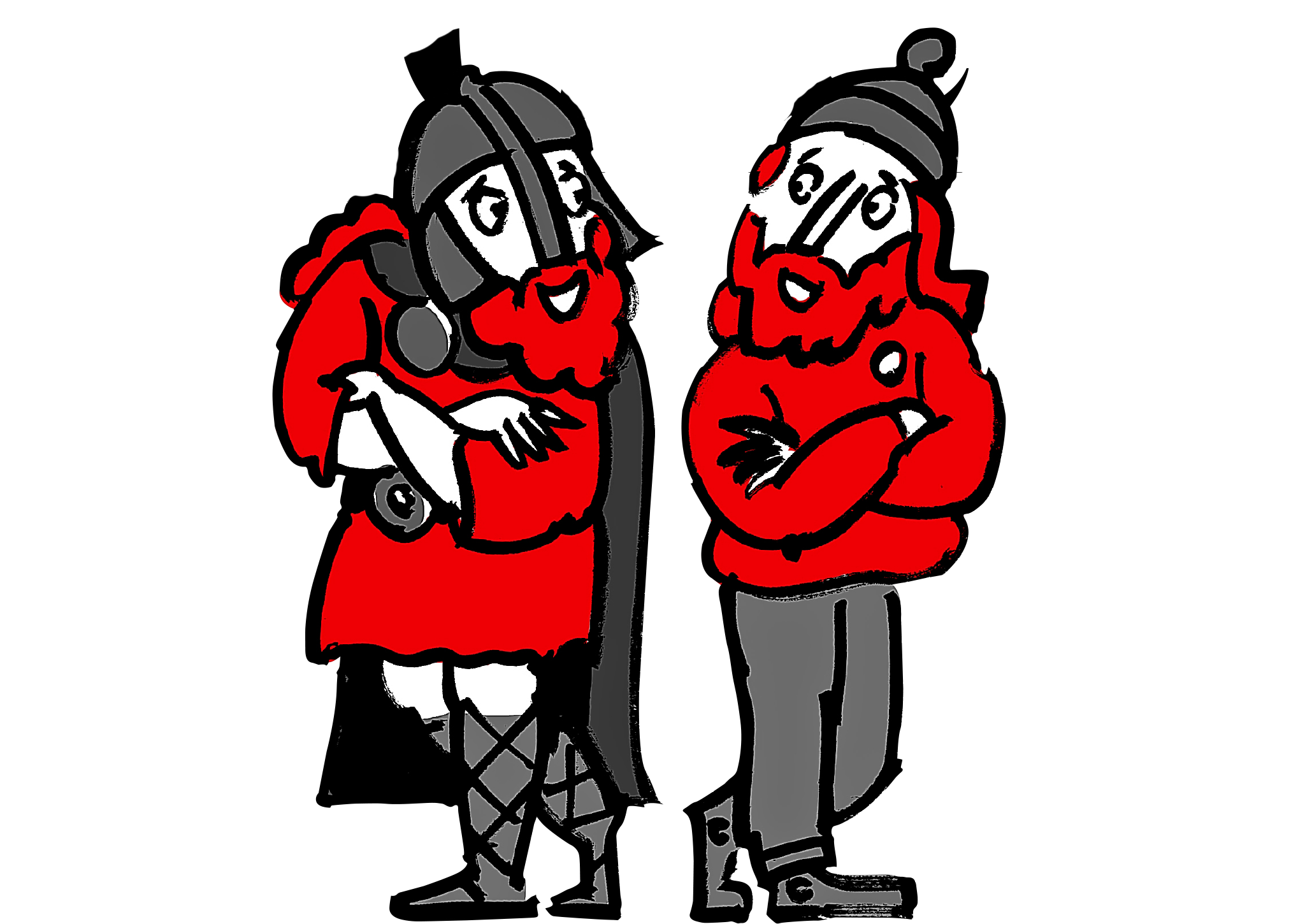Genetic geography is playing merry havoc with ancient beliefs
There are now variety of eye-catching yarns about the peopling of these islands since the Ice Age ended


Who are Yorkshire’s ancestral Africans? In 2007, genetic researchers identified a cluster of men who all had a distinctive Yorkshire surname, which has not been revealed.
The DNA in their male line connected them to a sub-section of “haplogroup A1”. So they shared a rare genetic marker almost exclusively found in sub-Saharan Africa. Uganda-born John Sentamu, the 97th Archbishop of York, joked about this shadowy cohort of his forerunners when he was named “Yorkshireman of the year”. Their moniker, however, remains a mystery. Next time you meet an Ackroyd or an Armitage, a Sutcliffe or a Sykes, consider that they may trail clouds of ancient glory that stretch a lot further south than Halifax.
Sharpened and deepened by large-scale DNA sampling, population genetics now spins a variety of eye-catching yarns about the peopling of these islands since the Ice Age ended and the glaciers retreated. Many of the best stories emerge from Oxford, where in 2004 the Wellcome Trust began to fund the “People of the British Isles” project. As a hub of expertise on human genetics, the university had already seeded lucrative spin-offs such as the genealogical service Oxford Ancestors Ltd, founded by Professor Bryan Sykes (who is not, as far as I’m aware, a sub-Saharan African by origin). This week, the People of the British Isles undertaking once more proved its flair for mammoth public impact with an intensively reported study in the journal Nature. It located the 17 genetic “tribes” of Britain and found extraordinary continuities in their DNA inheritance since the final phase of Anglo-Saxon settlement around 600AD.
As always with this kind of genetic geography, you stick in a parochial thumb and pull out the tastiest plum. I was taken by the revelation that DNA patterns in Cornwall and Devon still separate out with striking clarity, “with a division almost exactly along the modern county boundary” on the River Tamar. Rise up, ye sons of Cornwall (or viewers of Poldark, anyway), and drive back those biological aliens.
An early windfall from the silly season has dropped into media laps. Some reports invoked political units that only came into being many centuries after the benchmark of 600AD. One newspaper proclaimed in mock-horror that the English were 45 per cent “French”. Another, keener on fellow Europeans, purred that they were in fact 30 per cent “German”. Traditionally minded sons of the soil could revel in scientific proof concerning the rugged persistence of “tribal groupings” over 1,400 years. Conversely, for Professor Peter Donnelly of Oxford’s Centre for Human Genetics, who co-directed the research, what matters is that “it reminds us that everyone in Britain is an immigrant”. As he told Sky News, “It is only a question of when people arrived.”
All peoples cherish tales – or myths – about their distant origins. Those narratives have a habit of becoming the Rorschach blot on to which observers can project their fantasies and fears. Wishful thinking and fixed agendas steer or twist the reception of such stories. In the Oxford study, bear in mind that the sample derived from middle-aged people – 2,039 in all – whose four grandparents had all been born within the same 50-mile radius. In other words, it captures a genetic snapshot of the long-settled British population from just before the turn of the 20th century. As Donnelly says, the filigree precision of DNA threads helps to draw that picture in “exquisite and fascinating detail”.
This trail-blazing “fine-scale genetic map” does reveal impressive levels of both distinctiveness and durability. Misreadings aside, the evidence confirms that folk who stay put, stay put. It also tends to contradict the romantic notion that Anglo-Saxon incomers annihilated the mixture of communities we still call “Celts”, via genocide or violent ethnic cleansing – a fate hinted at by Kazuo Ishiguro in his new bestseller, The Buried Giant. Even within central and southern England, the majority strands of DNA – between 60 and 90 per cent – predate those “Germanic” migrations. Thus genetics endorses archaeology. In Britain Begins, the great archaeological historian Barry Cunliffe also argues for the assimilation of a fairly limited influx. But don’t expect French politicians and intellectuals to cease cursing those brutish “Anglo-Saxons” soon.
As ever, casual browsers will take away not the statistics but the spin. Not only hasty journalists have rushed to gloss the research. The Wellcome Trust’s presentation claims that it may show a “scientific basis” for the “strong sense of regional identity” in different parts of Britain. Well, up to a point. I suspect that sport, work, food, landscape, songs, stories and speech explain local patriotism better than the numinous urgings of the genes.
Sometimes, a mark fainter than an Anglo-Saxon field boundary appears to separate the harmless celebration of deep-seated belonging from the nativist nonsense of blood-and-soil. Science can help to draw a firmer line. Because population-mapping on this scale throws up such singular and surprising results – such as the near-total absence of any DNA legacy from the Vikings outside Orkney – it can bust more myths than it buttresses. Nor do advocates of an open and cosmopolitan nation need to fret about the evidence that, around 1900, many people had indeed squatted under the same oak trees for centuries.
This newly traced atlas of our genetic past drew an enthusiastic response from Sir Walter Bodmer, the pioneer population geneticist who conceived the People of the British Isles project and jointly led the research. He has said: “What it shows is the extraordinary stability of the British population. Britain hasn’t changed much since 600AD.” I find this oddly moving.
Sir Walter was born in Frankfurt am Main in 1936. Two years later, his family fled to Manchester. Although an infant when he arrived, he still stands within that amazing legion of exiles from Nazi tyranny who not only found an honoured role in their new homeland but showed the post-war British who they were. Just as Nikolaus Pevsner (born in Lepizig) defined “the Englishness of English art”, Geoffrey Elton (Tubingen) explained – decades before Hilary Mantel – how Thomas Cromwell had re-shaped the nation, Judith Kerr (Berlin) enriched British childhood with her stories, and Lucian Freud (also Berlin) held a coolly passionate mirror up to our faces, our bodies and our streets, so Bodmer investigated the ancient implantation of many British communities.
A nation content with thoroughgoing diversity need not fear the stubborn, clinging depth of its human roots. On the contrary. This genetic evidence for human stability – at least until 1900 or so – might even help defy the “swamping” rhetoric parroted by anti-immigrant populists. Could such a thickly planted forest ever be drowned by a rejuvenating shower? These sets of data underscore the resilience of many localities in Britain. Fragile flowers, shaken by every passing demographic breeze, do not flourish over 1,400 years.
Culture is not biology. Only a fool, a mischief-maker or a rabid ideologist would confuse the two. If recent progress in human genetics tells us anything, it is that the dizzying kaleidoscope of variation within as much as between population groups has precious little to do with the phantom categories once labelled “race”. Whatever its other outcomes, the Oxford study helps to lay another of those 19th-century ghosts. The Victorian pseudo-science of race believed in an ethnic entity known as the “Celts”. Now genetics confirms what archaeology already knew. No such unitary folk ever existed. Dwellers in Wales, Cornwall or Scotland belonged to discrete groups. In fact, “the Celtic parts of the UK … are among the most different from each other genetically”. Of course, different peoples might well share customs and creeds. But the Celts had as little, or as much, in common as their equally disparate “Roman” conquerors.
The DNA record has no axe to grind and no line to push. As the science writer Kenan Malik succinctly puts it, modern genetics “can distinguish between all sorts of populations. Some of these distinctions are useful scientifically” – above all, in medical research – “and some are not”. Their utility will depend “on the question we want to ask and the context in which we ask it”.
On the Oxford evidence, one of those questions may seek reassurance about the immemorial endurance of some people in some places. Another, though, might want to discover the peaceful coexistence over vast spans of time of distinct communities who neither isolate themselves nor entirely dissolve. In that light, this new map reveals a human patchwork strewn with enclaves, outliers and anomalies that refuse to cohere into a uniform whole. As always, it’s up to the interpreters to find the meanings and learn the lessons that they choose.
Whatever the spin, these picturesque just-so stories from Britain’s remote past may well feed our growing hunger for local self-assertion. In practice, that has much more to do with accountancy than with ancestry. In his Budget, George Osborne – that born-again fiscal tribalist – confirmed plans to transfer revenue-raising powers to Greater Manchester, West Yorkshire and even Cambridge. The future terrain of proud autonomy lies here, in the nitty-gritty of devolved finance, rather than in romantic fantasies spun from threads of antique DNA. Meanwhile, the Oxford map may give an innocent boost to folklore and tourism. I look forward to the Devon vs Cornwall genetic grudge match. First round: marine skinny-dipping, Poldark-style.

Join our commenting forum
Join thought-provoking conversations, follow other Independent readers and see their replies
Comments